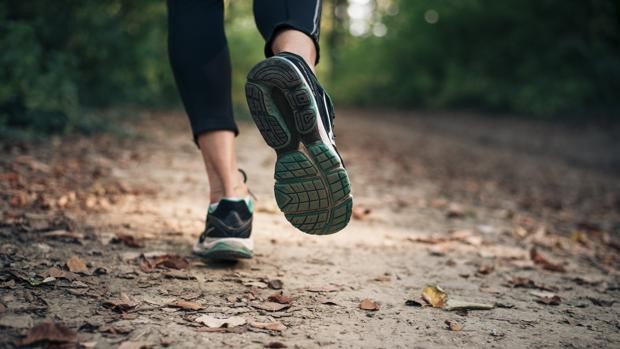Running News Daily
Running News Daily is edited by Bob Anderson. Send your news items to bob@mybestruns.com Advertising opportunities available. Train the Kenyan Way at KATA Kenya and Portugal owned and operated by Bob Anderson. Be sure to catch our movie A Long Run the movie KATA Running Camps and KATA Potato Farms - 31 now open in Kenya! https://kata.ke/
Index to Daily Posts · Sign Up For Updates · Run The World Feed
Why the first 10 minutes of running can be the worse for everyone
Ask anyone what the worse bit of their run is and chances are they will say the first 10 minutes or so. We all know it. That feeling of having your worst enemy on your shoulder, cruelly whispering ‘you can’t do this’: your breathing is all over the place and you wonder if indeed you did lace into concrete shoes instead of trainers.
Whilst we might not get as far as loving it, there are lots of things we can do to make it better. Why does it happen: Basically, all those physical and mental responses we get early on in any run, are our body’s way of saying, ‘what the hell are you asking me to do! You have got to be joking! when you ask it to go from ‘I’m very happy just existing’ to running.
To use the analogy of the car, you are asking your body to go from cold start, it’s not been used for a while, to 5th gear and speeding along the motorway without making any gear changes. A little bit of very simplified background…. (feel free to skip this and go straight to ‘what to do’) Our bodies are fuelled by various different energy systems, some which require oxygen (aerobic) and others that don’t (anaerobic) and whilst they operate in parallel, each is suited to a particular intensity of effort.
At the very top of the spectrum is the ‘Usain Bolt’ intensity, fuelled by a system which only lasts for around 10 seconds. It is no coincidence that the 100 m record is around this time. When it runs out, sprinters are relying on slowing down the least, rather than running faster. Very few of us will ever take part in a 100m sprint but this same energy system is present when we set off on those first few steps of a run, in fact when we go from resting to any activity. When this ‘B of the Bang’ source diminishes we switch to an energy system which uses stored glucose/glycogen but still doesn’t need oxygen and lasts for around 60 – 120 seconds.

A by product of this is lactic acid: the stuff which makes our legs feel heavy, gives us shortness of breath (recognise any of these?). Beyond this we are left with the work horse, the aerobic energy system, which uses oxygen, carbohydrates, fats and proteins to create energy and if nurtured can go on indefinitely. So when we set off on that run our bodies use up the first 2 sources of energy in the first few minutes and then are left rapidly adjusting to use the 3rd. Pretty clever really. What we need to do is learn how to ease the transition.
What can you do to make it better WARM UP Getting your body and head ready for running is not a bolt on, nice to have. It does what it says on the tin and gets our heart, muscles and lungs ready and prepped for running.
Going back to the energy systems, warming up means we have already acclimatised the body to needing more oxygen and so it doesn’t spend the first few minutes bringing in huge lungs fulls and feeling generally pants. The warmer your joints and muscles are before your start the less effort and therefore the less energy, oxygen they need when you get going running.

START OFF SLOW Even with a good warm up it pays to start off at a slower pace and work up to the effort you want to be putting in for the majority of the run. And I use the term ‘effort’ deliberately, as using the less techy RPE (Rate of Perceived Effort) to gauge your run is far more effective and easier than heart rate or pace. Aim for a ‘chatty’ kind of running: you can pretty much hold a conversation rather than feeling really out of breath. If 1 is sitting down watching TV and 10 is maximum effort, you feel sick, then aim for around 4-6. Even though it may feel super slow, this level of effort produces the best results in terms of your overall fitness. You will speed up as you get fitter but your effort levels will feel the same. It is very common for runners and in particular new runners to start off too fast and then come unstuck.
​DISTRACTION Listen to music, podcast and give your brain something else to tune into for the first few km or minutes. Alternatively run somewhere that keeps your eyes and brain occupied. FUEL Make sure you eat and drink regularly during the week. Those 10 minutes are a lot worse when you are dehydrated.
BREATHE Sounds obvious but take notice of your breathing. If it is short and shallow, try and focus on a calm, controlled out breathe and the in will follow. The more oxygen you take in the quicker the energy systems adapt. If after a few minutes you can't get it under control, then you are going too fast, slow down. You can do all these things but there will be times when the first 10 minutes really suck and so there is something about training your brain to tough it out and ignore the 'Stop!' voice in your head. Telling yourself that you know what is going on and that it will get better is a simple but useful technique. Kind of a, 'I have been here before and I have overcome it' type conversation with yourself. But equally importantly is listening to your body, stopping running and saving it for another day.So whilst you may never learn to love the first 10 minutes, there is plenty you can do to make the most of them.
by Run Surrey Hills
Login to leave a comment




